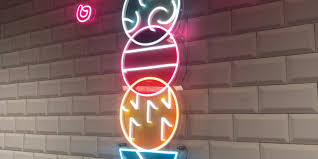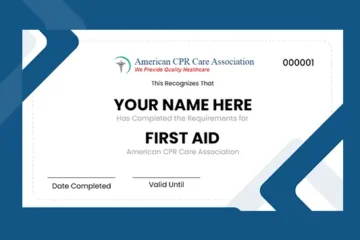Introduction to LED neon and letter signs
Bright lights and bold designs—signage has a unique power to attract attention. Among the many options available today, LED neon signage and letter signs stand out for their vibrant colors and modern appeal. Whether you’re sprucing up your storefront or adding flair to your home, these lighting solutions can make a significant impact.
LED neon offers an innovative twist on traditional neon signs, combining aesthetics with functionality. But how do they stack up against classic glass neon? It’s not just about looks; durability, maintenance, cost-effectiveness, and advantages all play essential roles in making the right choice for your needs.
Join us as we dive into a detailed comparison of LED neon signage versus traditional letter signs. Let’s illuminate what makes each option shine—and help you decide which is best for your next project!
Durability comparison between traditional neon and LED neon signs
When it comes to durability, traditional neon signs and LED neon signage offer a stark contrast. Traditional neon relies on glass tubes filled with gas. These tubes can break easily, leading to costly repairs or replacements. One bump or fall can mean an end for your classic sign.
On the other hand, LED neon signs are designed with flexibility in mind. They use durable materials that resist shattering and wear over time. This resilience makes them ideal for both indoor and outdoor settings.
Additionally, LED lights have a longer lifespan compared to their traditional counterparts. While a classic neon sign might last around 10 years before needing significant maintenance, LEDs can shine brightly for up to 50,000 hours under proper conditions.
Weather resistance is another factor where LEDs excel. Rain or snow won’t affect their performance like it could with fragile glass components of traditional options.
Maintenance requirements for traditional neon vs. LED neon signs
Traditional neon signs require significant upkeep. They use gas-filled tubes, which can break or leak over time. Repairing a broken tube often means calling in a professional, leading to added costs and downtime.
On the other hand, LED neon signage is much simpler to maintain. These signs are made from flexible materials that are less prone to damage. If an LED fails, it’s usually easy to replace just that section without affecting the entire sign.
Cleaning is another factor to consider. Traditional neon typically needs more careful handling during cleaning due to fragile glass components. In contrast, LED options can be wiped down with mild soap and water without fear of damaging delicate parts.
For those looking for hassle-free maintenance, LED neon signage stands as the clear winner in this category.
Cost comparison of traditional neon vs. LED neon signs
When considering cost, traditional neon signs often come with a hefty price tag. The materials used, such as glass tubing and gas filling, can significantly drive up production expenses. Installation also tends to be more complicated due to the fragility of the glass.
In contrast, LED neon signage offers a budget-friendly alternative. They are generally cheaper to produce and easier to install. With lower energy consumption rates, businesses can enjoy reduced utility bills over time.
While initial costs for traditional neon may seem justifiable for some aesthetics, maintenance can add up quickly. Repairs on broken tubes or gas leaks often require professional assistance and additional funds.
LED options typically demand less ongoing investment. Their durability means fewer replacements and repairs down the road—making them a savvy choice for both small businesses and larger enterprises looking to maximize their signage budgets.
Advantages of using LED neon signage and letter signs
LED neon signage and letter signs offer a vibrant alternative to traditional options. Their bright colors catch the eye, making them perfect for attracting customers.
These signs are highly energy-efficient. They consume significantly less power than traditional neon lights, leading to lower electricity bills.
Another advantage is their longevity. LED neon signs can last up to 50,000 hours or more, reducing the need for frequent replacements.
Safety is also a key benefit. Unlike glass tubes filled with gas, LED signs are made from durable materials that won’t shatter easily.
Installation is simpler too. Most LED signage can be mounted quickly without special tools or skills required.
Customization options are virtually limitless; you can create any design imaginable to reflect your brand’s identity effectively. This versatility makes them an ideal choice for businesses of all sizes.
Factors to consider when choosing between traditional or LED signage
When deciding between traditional and LED signage, consider your target audience. Who will see the sign? Understanding their preferences can help you choose a more effective option.
Think about location. Outdoor signs face different challenges than indoor ones. Harsh weather conditions may lead to wear and tear on traditional neon signs, while LEDs are more resilient in various environments.
Next, evaluate energy consumption. LED Neon Signage is known for being energy-efficient compared to traditional options, which can impact operational costs over time.
Aesthetics also play a role in your decision-making process. The visual appeal of both types varies greatly, so consider what aligns best with your brand identity.
Think about regulatory requirements in your area regarding signage materials and brightness levels. Compliance is essential to avoid future complications or fines.
Conclusion and recommendations for businesses or individuals looking to invest in signage
Choosing the right signage can significantly impact your business’s visibility and appeal. LED neon signage stands out for its durability, requiring less maintenance compared to traditional neon signs. These modern solutions not only save on upkeep but also offer energy efficiency, making them an economical choice in the long run.
For businesses or individuals considering a new sign investment, it’s crucial to evaluate specific needs. If you prioritize vibrant colors and creative designs with low maintenance, LED options are likely a smart fit. However, if you’re drawn to classic aesthetics and are prepared for the ongoing care that comes with traditional neon signs, they still hold charm.
Consider factors like location exposure, target audience preferences, and budget constraints when making your decision. Assessing these elements will help guide you toward the best choice for effective branding through letter signs or LED neon signage that resonates with your vision and goals.



